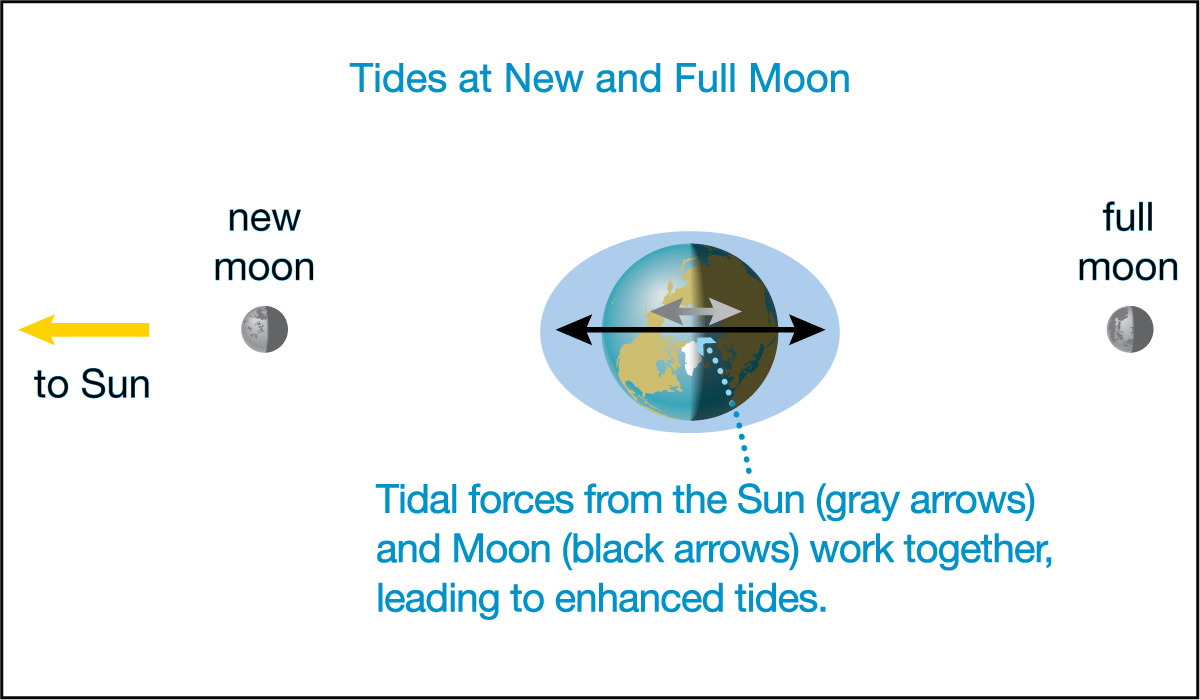Why do tides depend on the phase of the Moon?
As we’ve stated in the text, and you may know if you live near a coastline, tides tend to be more extreme at new and full moons and less extreme at first- and third-quarter moons. In other words, tides depend on the phase of the Moon. The reason is that while the primary cause of the tides is the difference in the tug of the Moon’s gravity on the portions of Earth facing toward and away from the Moon, the Sun also pulls differently on different portions of Earth. In other words, while the Moon is the primary source of the “stretching force” that creates tides on Earth, the Sun exerts a secondary effect, and the two effects don’t always line up.
Figure 1 shows how this works. First, notice that, as indicated by the arrows, the “stretching force” that the Sun creates on Earth is a little less than half as strong as that of the Moon. Then notice the following key points:
- When the phase of the Moon is either new or full, the tidal forces of the Sun and the Moon work together, with both stretching Earth along the same line.
Therefore, they enhance each other, making the tides especially strong. (These strong tides are called spring tides, so named because the water tends to “spring up” from the oceans.) - When the phase of the Moon is first-quarter or third-quarter, the tidal force of the Sun is perpendicular to that of the Moon, so the Moon and Sun are working against each other.
Therefore, although the Moon still wins out because it exerts the stronger “stretching force,” the tides are lower than usual. (These relatively small tides are called neap tides.)


Figure 1 – This figure shows how and why tides vary with the phase of the Moon. Click here to see an animated version of the figure.
Be sure to remember that the Sun’s total gravitational effect on Earth is much greater than the Moon’s. That is why Earth orbits the Sun. However, the Sun’s much greater distance from Earth (compared to the Moon’s distance) means that the difference in the Sun’s pull on the near and far sides of Earth is relatively small. That is why, even though the Sun exerts a much stronger gravitational force than the Moon, the “stretching force” created by the Sun is smaller than that of the Moon.